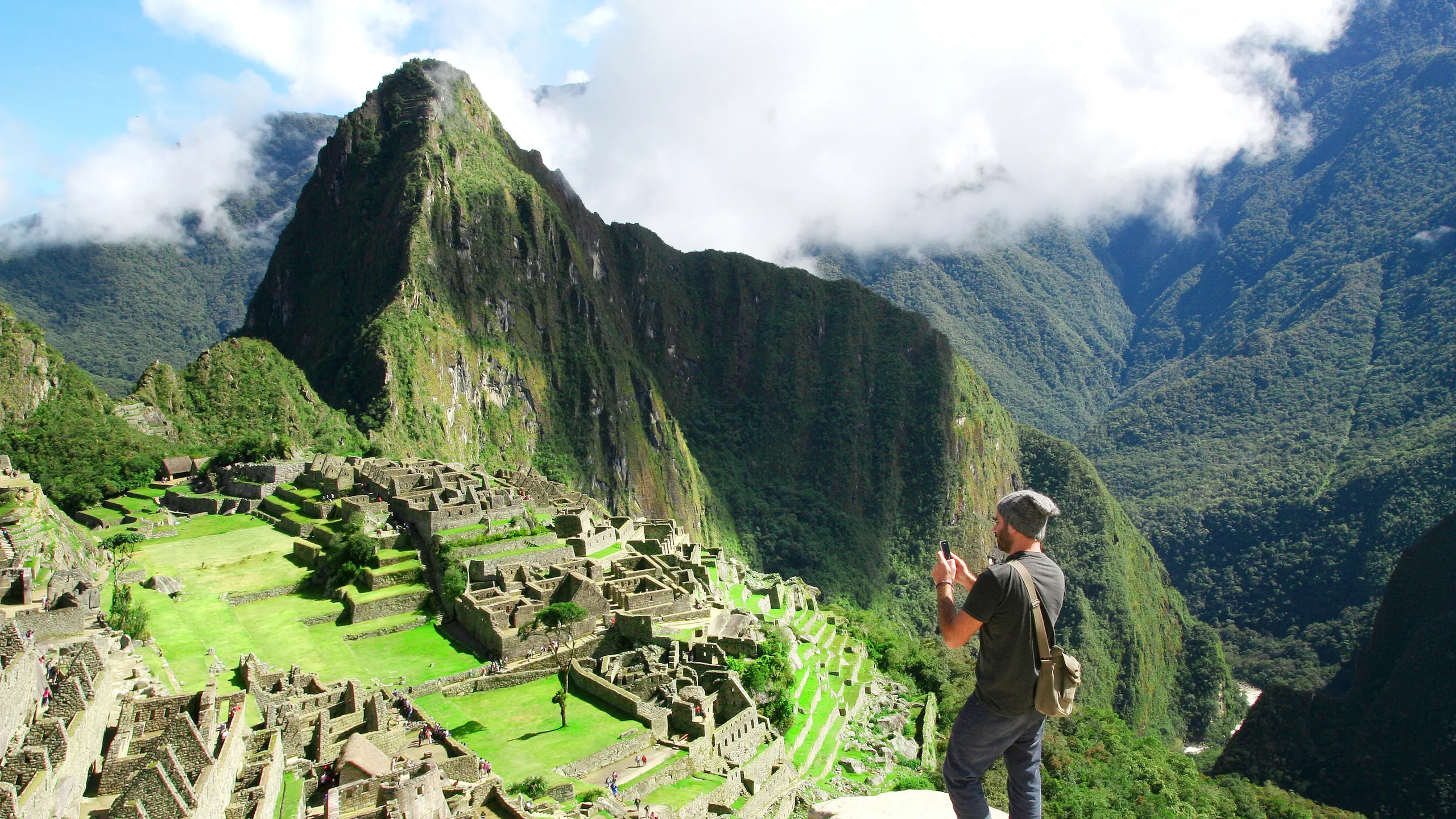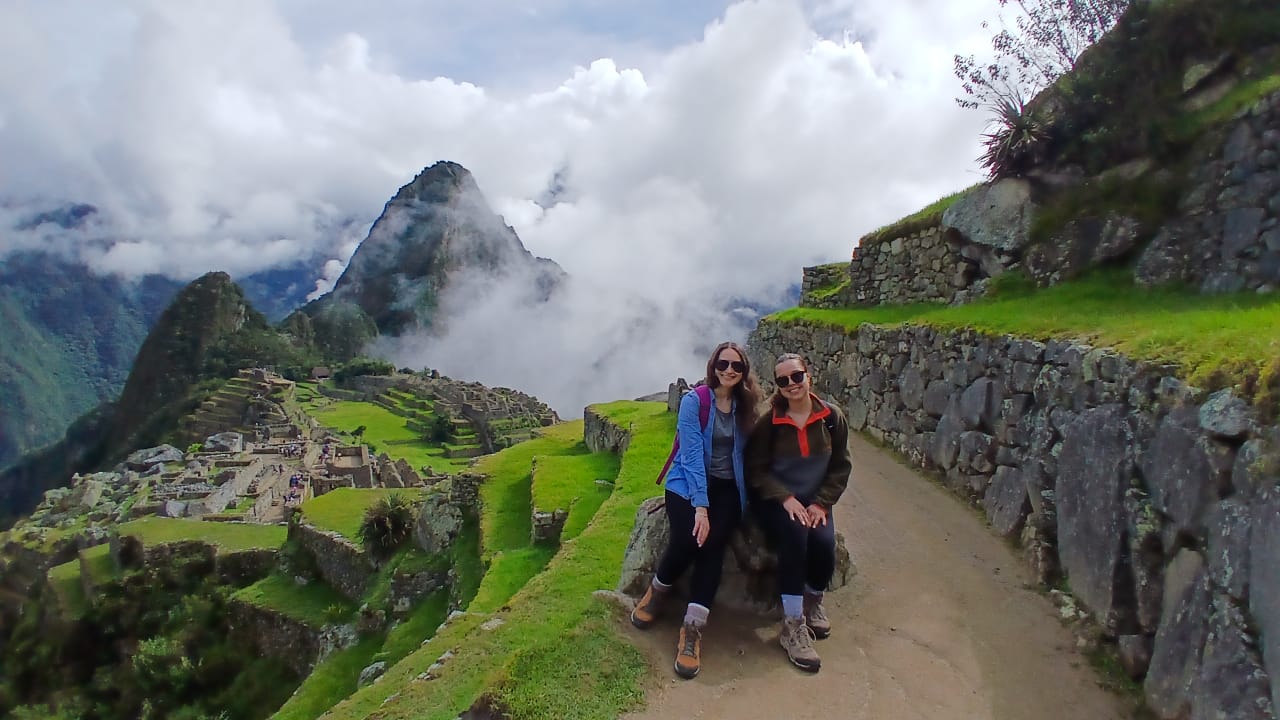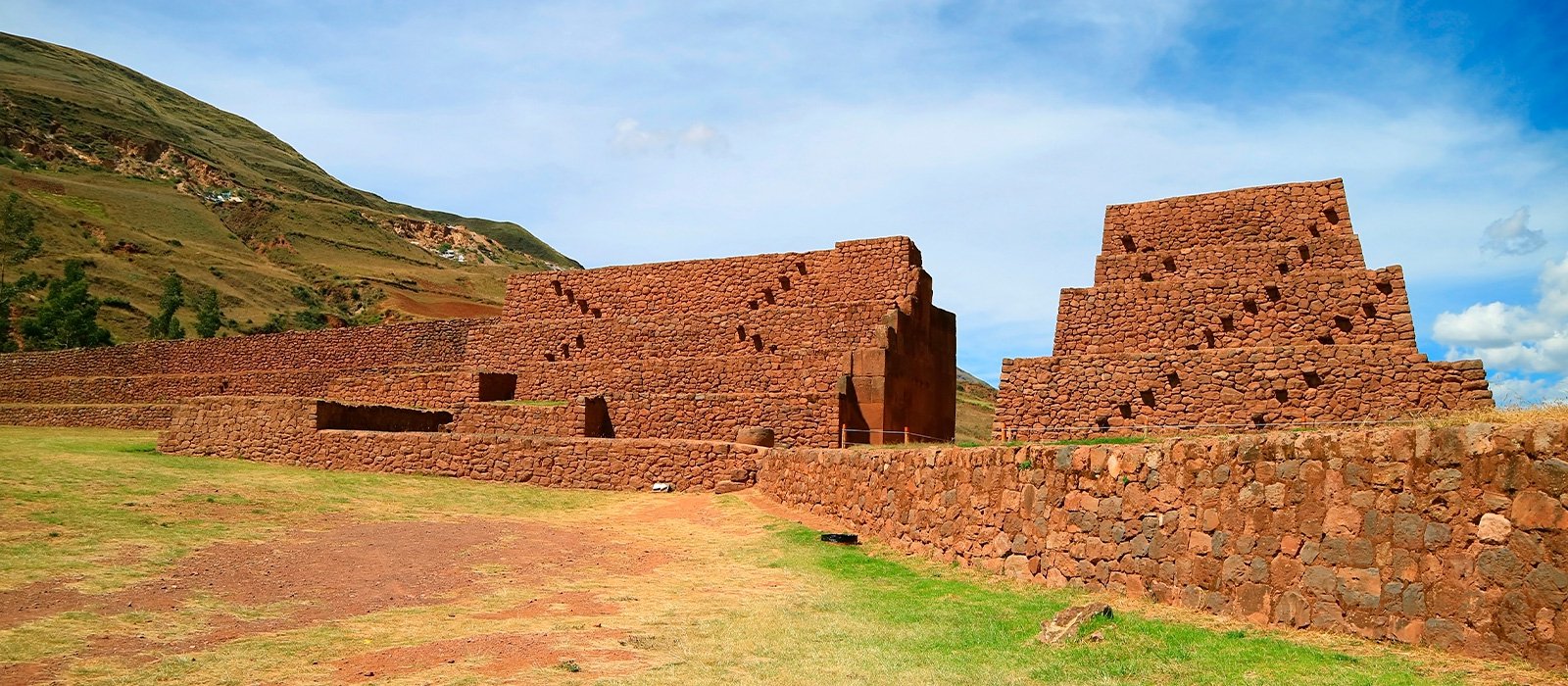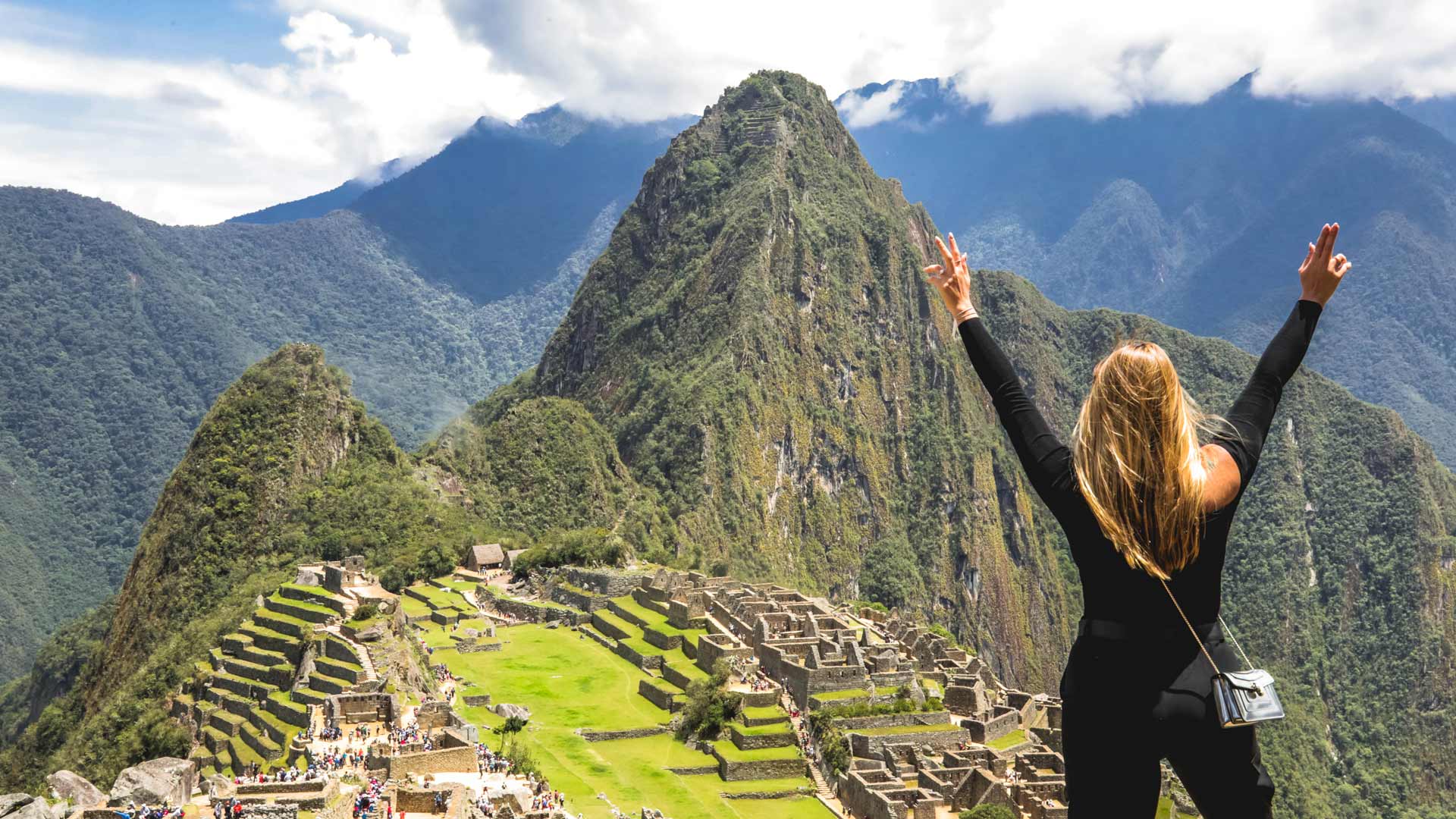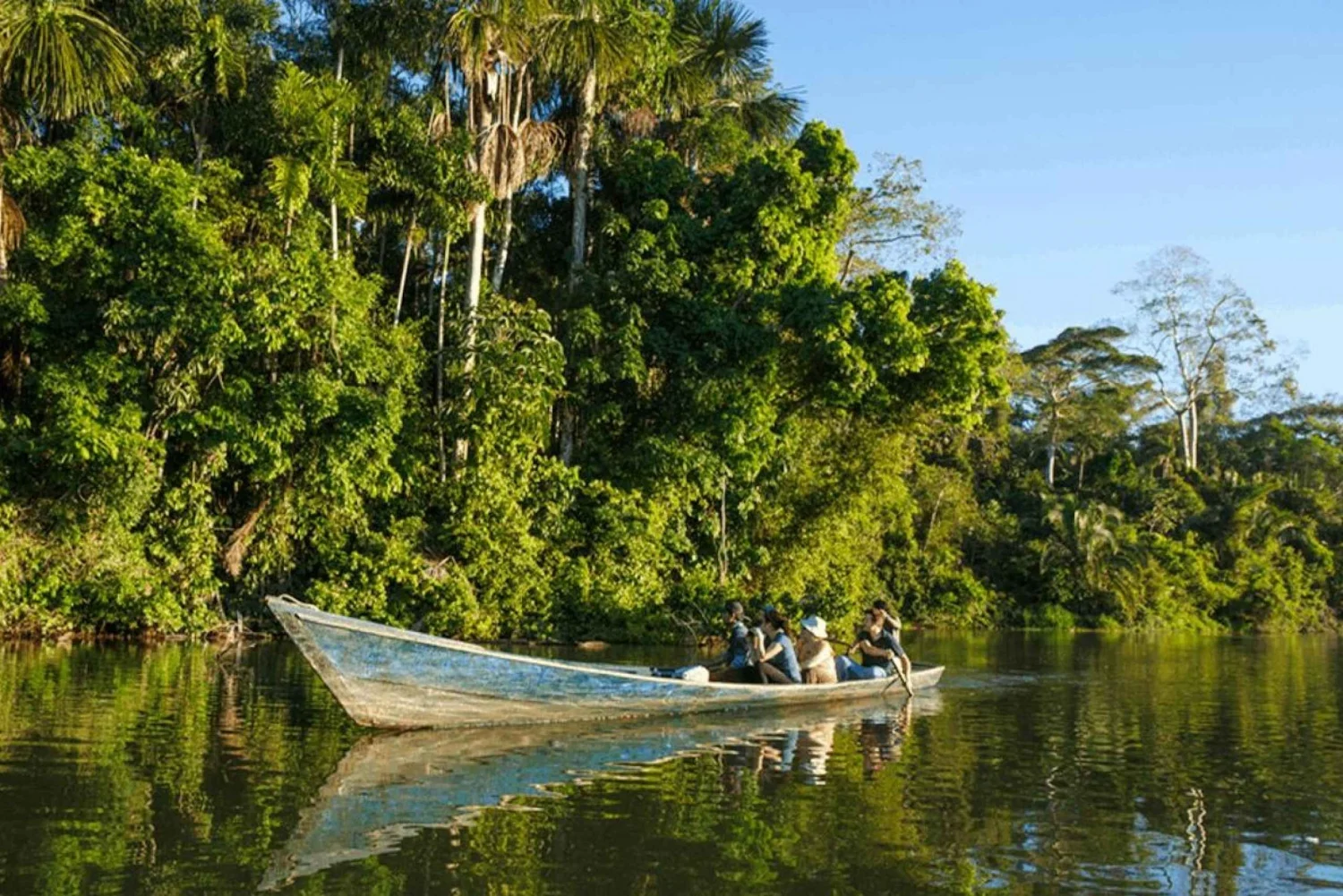Inca Trail To Machu Picchu 4 Days 3 Nights
The 4-day Inca Trail trek to Machu Picchu is one of the most famous and popular hikes in the world. Over four days along ancient Inca paths, you will visit a variety of stunning archaeological sites and experience the vast landscapes of Machu Picchu National Park. This unique journey will take you through the Inca Trail until you reach the iconic citadel of Machu Picchu — a once-in-a-lifetime experience that everyone should do, regardless of age. The traditional Inca Trail to Machu Picchu combines hiking, camping, adventure, archaeology, nature, and history, winding through breathtaking mountain scenery, valleys, and jungle until you arrive at the majestic Inca city of Machu Picchu.
Overview
INCA TRAIL TO MACHU PICCHU 4 DAYS/3 NIGHTS
DURATION: 4 DAYS AND 3 NIGHTS
SCHEDULE:
- DEPARTURE (DAY 1): 05:00 AM
- RETURN (DAY 4): 08:00 PM
ATTRACTIONS TO VISIT:
- Day 1: Cusco – Km 82 – Huayllabamba
- Day 2: Huayllabamba – Warmiwañusca Pass – Pacaymayo
- Day 3: Pacaymayo – Runkurakay – Sayacmarca – Wiñaywayna
- Day 4: Wiñaywayna – Inti Punku – Machu Picchu – Cusco
Itinerary
ITINERARY:
DAY 1: CUSCO – KM 82 – HUAYLLABAMBA
Very early in the morning, we will pick you up from your hotel and then transfer by bus to kilometer 82. Here, we will have the pleasure of meeting the team who will accompany us during our trek, including porters, tent crew, cooks, etc. After that, we will begin our hike.
The first day is fairly easy during the initial kilometers. We will enjoy a beautiful view of the snow-capped Veronica Mountain (5,900 meters / 19,350 feet), and walk alongside the Urubamba River. Almost immediately, we will encounter the archaeological complexes of Q’ente, Pulpituyoc, Kusichaca, and Patallaca, where we will stop for lunch to regain energy. From this last point, the path continues along the left bank of the Kusichaca River in the area of the same name, where we will not only see the bridge but also tombs, aqueducts, terraces, and paths until we reach the small town of Huayllabamba (3,000 meters / 9,840 feet), where we will set up our first camp.
- Hiking time: 5 to 6 hours.
DAY 2: HUAYLLABAMBA – WARMIWAÑUSCA PASS – PACAYMAYO
After breakfast, we will start our hike. This day is probably the most difficult as we will have to ascend to the Warmiwañusca pass, reaching 4,200 meters (13,780 feet). We will cross a beautiful forest of Queuña trees. We will enjoy attractive views of the Andean landscape, arriving at Llulluchapampa (3,750 meters / 12,300 feet), a typical plateau at the foot of the pass. After reaching the Warmiwañusca pass, we will descend to the Pacaymayo Valley (3,620 meters / 11,880 feet), where we will camp overnight. From here, we will already appreciate the extraordinary construction of the Inca Trail.
- Hiking time: 7 to 8 hours.
DAY 3: PACAYMAYO – RUNKURAKAY – SAYACMARCA – WIÑAYWAYNA
After breakfast, we will begin our hike. This is one of the most beautiful days on the Inca Trail. We will visit the archaeological complex of Runkurakay, from which we will have a spectacular view of the area. We will ascend the pass of the same name (3,800 meters / 12,470 feet), then continue toward the archaeological complexes of Sayacmarca, Phuyupatamarca, and Wiñaywayna, all connected by a wonderful original Inca trail made of white granite, surrounded by the abundant vegetation of the cloud forest. We will observe the remarkable balance achieved by the Incas with their environment. Our camp will be set near the Wiñaywayna archaeological complex (2,700 meters / 8,860 feet).
- Hiking time: 8 hours.
DAY 4: WIÑAYWAYNA – INTI PUNKU – MACHU PICCHU – CUSCO
On this day, we will wake up early, around 4:00 a.m. After enjoying a hearty breakfast, we will start our hike. We will say goodbye to the porters as they return to Cusco with all the camping equipment. We will hike through dense vegetation typical of the rainforest toward the Sun Gate (Inti Punku), where we will have a magnificent panoramic view of the Inca Citadel of Machu Picchu. We are expected to arrive at Machu Picchu around 7:00 a.m. Once there, we will have a guided tour lasting about two and a half hours to visit the most important places of Machu Picchu. The Machu Picchu Sanctuary consists of two main areas: an agricultural zone, mainly made up of terraces and food storage buildings; and an urban zone, highlighting the sacred area with temples, plazas, and royal mausoleums crafted with exquisite precision. Afterwards, you will have free time to explore Machu Picchu on your own.
In the afternoon, we will transfer to the town of Aguas Calientes, where we will take the train to Ollantaytambo. There, our transport will be waiting to take us back to your hotel in Cusco city.
End of service.
Included
INCLUDES:
- Transportation to kilometer 82.
- Professional accredited trekking tour guide to lead adventure trips.
- Meals during the tour: 3 breakfasts, 3 lunches, 3 dinners (vegetarian option available).
- Two-person tents.
- Bathroom tent, kitchen, and dining tent.
- Tables and benches.
- Cook.
- Support staff (porters and camping team).
- Entrance ticket to the Inca Trail and Machu Picchu.
- Bus from Machu Picchu Sanctuary to Aguas Calientes.
- First aid kit.
- Oxygen tank.
- Return train from Aguas Calientes to Ollantaytambo.
- Transfer from the train station to the hotel.
Not Included
NOT INCLUDED:
- Sleeping bag (can be rented from us for USD 25).
- Trekking poles (can be rented from us for USD 20).
- Meals not listed above.
- Tips.
What To Bring
WHAT TO BRING:
- Passport or ID card.
- Wear sneakers or light hiking shoes.
- Raincoat (long poncho) during rainy season.
- Long-sleeve shirts.
- Long pants.
- Sunscreen, wide-brimmed hat for sunny days.
- Sunglasses.
- Camera or video camera.
- Small denomination cash in soles or dollars.
- Swimsuit (for the hot springs in Aguas Calientes).
- Water purification tablets (Micropur recommended).
- Flashlight with spare batteries (headlamps recommended).
- Some extra snacks (chocolates, candies, etc.).
Prices
Departure Dates: We have groups for the Inca Trail every day of the year, except February, when the Inca Trail is closed for the entire month. In February, you can visit Machu Picchu by train, but it is not possible to hike the Inca
COST PER PERSON IN US DOLLARS IN SHARED SERVICE:
| TOUR TYPE | TOUR COST |
| ADULT | USD 650.00 |
| STUDENT
(UNDER 17 YEARS OLD) |
USD 620.00 |
The cost of the tour is for a shared service; you will be part of a group. You can also inquire with the agency about the cost for private services. For more information, you can email us at libertyperutravel@gmail.com.
Map INCA TRAIL TO MACHU PICCHU 4 DAYS 3 NIGHTS
FAQS Inca Trail To Machu Picchu 4 Days 3 Nights
The Inca Trail hike to Machu Picchu is one of the best and most popular hikes in the world and the number one in Peru. This trek sells out very fast, especially in the high season from May to September. Permits can be sold out up to 6 months in advance, so booking the Inca Trail far in advance is a must.
It’s also important to understand that booking with a local tour operator, an official Inca Trail tour operator, is crucial to securing the Inca Trail permits. Consider the following reasons before choosing your tour operator:
- Book with a Local Company: Inca Trail permits must be paid for in person and cash at the Machu Picchu ticketing office in Cusco. This is why booking with a local company is essential.
- Book with an Official Tour Operator: Once Inca Trail permits are sold out, there is no way to get the permits for that date—no waiting list, no cancellations. Only official tour operators have access to the Inca Trail booking system and can see live availability. You cannot see live availability online or book the Inca Trail permits by yourself. Secure the permits with an authorized Inca Trail tour operator.
- Alternative Treks: If the Inca Trail permits are sold out, you can still book alternative hikes, such as the Short Inca Trail, Salkantay Trek, Lares Trek, and Choquequirao Trek. However, be careful; some unscrupulous companies will sell these alternative treks as Inca Trail tours. We often receive calls from our guests stating that they found an Inca Trail tour elsewhere, even though the permits are sold out for that specific date, and they end up hiking the Salkantay Trek instead.
Booking the famous Inca Trail Machu Picchu Trek is easy with TreXperience. Click on any BOOK NOW button on our website, select your departure date, fill out the form with all requested details, including passport information, and finally submit the initial payment required to book the Inca Trail Trek.
Due to the strict booking policy for the Inca Trail permits administered by the Peruvian Government, all Inca Trail bookings must be confirmed manually. Your tour will be 100% guaranteed only after manual confirmation from our side. This process could take up to 48 hours on weekends.
The Classic Inca Trail Machu Picchu the only trek in Peru that offers an authentic camping and hiking experience. Over four days and three nights, we will be in the mountains and staying in camping tents. There are no hotels or other buildings; we will be camping out in nature and carrying all the equipment from beginning to end.
At TreXperience, we provide comfortable 4-person Eureka tents for every 2 travelers. We also provide kitchen tents, dining tents, and private portable toilets, all accompanied by an expert trekking team.
The Inca Trail the only trek in Peru that offers an authentic camping and hiking experience. Over four days and three nights, we will be in the mountains and staying in camping tents. There are no hotels or other buildings; we will be camping out in nature and carrying all the equipment from beginning to end.
At TreXperience, we provide comfortable 4-person Eureka tents for every 2 travelers. We also provide kitchen tents, dining tents, and private portable toilets, all accompanied by an expert trekking team.
Before embarking on a hiking trip to Machu Picchu, you should consider a few things you can do to reduce the risk of altitude sickness:
- Arrive at Cusco two days in advance so your body has time to acclimatize
- Avoid rapid ascent so your body has time to adapt to its new altitude.
- Stay hydrated by drinking lots of fluids like water and avoid alcohol consumption.
- At high altitudes, eat smaller and lighter meals
- Sleeping enough each night will allow your body to recover from exertion during the day.
If you start to feel symptoms of altitude sickness, descend to a lower altitude immediately and rest until you feel better. If you are in Cusco City, you can opt to travel to the Sacred Valley, where you can rest and prepare for the amazing Machu Picchu Trek.
Before embarking on a hiking trip to Machu Picchu, you should consider a few things you can do to reduce the risk of altitude sickness:
- Arrive at Cusco two days in advance so your body has time to acclimatize
- Avoid rapid ascent so your body has time to adapt to its new altitude.
- Stay hydrated by drinking lots of fluids like water and avoid alcohol consumption.
- At high altitudes, eat smaller and lighter meals
- Sleeping enough each night will allow your body to recover from exertion during the day.
If you start to feel symptoms of altitude sickness, descend to a lower altitude immediately and rest until you feel better. If you are in Cusco City, you can opt to travel to the Sacred Valley, where you can rest and prepare for the amazing Machu Picchu Trek.
You cannot fly directly from your country to Cusco. You must book your international flight to Lima. From there, you can either stay a few days on the coast of Peru or connect with a domestic flight to Cusco. Once you arrive in the city of Cusco, it’s recommended to stay in a hotel near the historic center and book hotels with easy route access.
- On the first day, you can rest in Cusco and, if possible, explore on a guided Cusco City Tour in the afternoon.
- On the second day, you can take a full-day Super Sacred Valley Tour and, if possible, stay in Ollantaytambo. If you stay in Ollantaytambo, you will save a 2-hour trip by bus on the day of the Machu Picchu Inca Trail.
Exploring Cusco City and the Sacred Valley will allow you to acclimatize slowly to the altitude and also explore the most remarkable places nearby.
If possible, after the Inca Trail hike to Mahcu Picchu, we recommend resting for one day to recover. Then, you can explore more places in Cusco, take day hikes, or travel to other regions.
- Rainbow Mountain: The best and most popular day tour from Cusco after the Machu Picchu Inca Trail. This fantastic hike takes you to the 5200-meter-high colored mountain and the Red Valley.
- Humantay Lake: Another classic day tour located at 4200 meters.
- You can travel to Puno by bus and explore the floating islands.
The Machu Picchu Inca Trail is the most popular trek in South America; only 500 permits are sold daily, and this number includes porters, tour guides, chefs, and travelers. Make sure you book far in advance to get your preferred date.
For months like April, May, June, and July, we recommend booking the previous year before October: Every year, in the first months of October, the Inca Booking system will be open for the next year, and some dates will sell out immediately.
We recommend booking at least 6 months in advance for the high season (April to October) and 4 months in advance for the slow season (November to March).
If The Classic Inca Trail is sold out, the team will contact you to offer alternative dates or tours to Machu Picchu. It’s important to note that submitting the payment does not guarantee an Inca Trail permit. You must always wait for manual confirmation from our team indicating that we have successfully secured the Inca Trail permits. This process could take around 24 hours; if it is a weekend, the confirmation will be sent on Mondays.
The maximum group size is 16 travelers. However, this number is rarely met since it depends on how many spots we sell before the permits are sold out. These are the general rules of the Inca Trail and apply to all tour operators.
The average group size is 8 to 12 travelers per group. Some days, we might have 2 travelers, 10 travelers, or a full group of 16 travelers. It’s important to know that for every 8 travelers, there is 1 tour guide. This is a general rule of the Inca Trail.
Some operators only offer groups of 8 people, saying guests will get personalized service. However, this is not the best option for the following reasons:
- Groups of 8 people or fewer will only be allowed 1 tour guide
- Groups of 9 or more will be allowed 2 tour guides.
As a tour guide and my personal experience, managing a group of 8 people alone is very challenging; if we have travelers of different ages and speeds, it will become complicated for 1 person to lead the group.
If there are 9, 10, or 12 travelers and 2 tour guides, it is easier to manage as 1 tour guide can be at the front of the line, and 1 tour guide can stay at the back. Hiking in a group tour during the Inca Trail, all travelers will walk at their own speed and only re-group at specific places for resting or guided tours.
When organizing a group tour, it is difficult to know how many people will be on a specific date. However, we will always aim to get the maximum to have 2 tour guides.
For the Inca Trail Trek, we rent sleeping bags made specifically for the temperatures and altitudes experienced during the Machu Picchu hike. We also rent high-quality, adjustable, and light Black Diamond trekking poles. Additionally, we provide inflatable mattresses, which are light and comfortable. You can bring your equipment as well, especially if you are very tall; in that case, we recommend bringing your own sleeping bag.
- Sleeping bag: $25
- Trekking poles: $20
- Inflatable mattress: $20
The prices are in USD and for the whole tour. We provide a foam sleeping pad for the Inca Trail tour; the air mattress is optional if you want more comfort.
The total distance of the Classicn-long Inca Trail is 26 miles or 42 km long. The average person takes about 4 days to complete the entire trail, but if you’re not used to hiking, you may want to give yourself an extra day or two. The Short Inca Trail is also a great option if you don’t have the time for an entire hike; this short version covers a 13km hike or 8 miles.
When hiking to Machu Picchu through the Inca Trail, we will traverse different altitudes and microclimates. We start in the Andes, hike up to the cold mountains, and end the tour in the warm cloud forest. You must pack for warm, hot, cold, rain, sun, wind, and all types of weather. Below, you will find the most important references about the altitude on the Inca Trail.
- Cusco City is located at 3,399 m or 11,151 ft.
- The start point of the Inca Trail is KM 82 at 2,642 m or 8,867 ft.
- The average altitude of the Inca Trail is 3,000 m or 9,842 ft.
- Dead Woman’s Pass is the highest mountain at 4,215 m or 13,835 ft.
- The second highest mountain pass is Runkuraqay at 4,000 m or 13,123 ft.
- Machu Picchu, where the Inca Trail ends, is 2,430 m 7,972 ft.
- Aguas Calientes town, where we take the train back to Cusco, is 2,040 m or 6,692 ft.
You can learn more about the altitude of the Inca Trail at our blog: Inca Trail Altitude.
The Classic Inca Trail starts at Km 82, Piscacucho village (2,642 m or 8,867 ft), in the Ollantaytambo district, Urubamba Province. The main checkpoint is located on the right side of the Urubamba River. Once you cross the river, you enter the Inca Trail protected area. To participate in the Inca Trek to Machu Picchu, you must arrive in Cusco city around 2 days before the trek departure. You can book a hotel in Cusco City or stay in the Sacred Valley near Ollantaytambo town. We can collect you from either location near the main route.
The Short Inca Trail starts at Km 104, also called Chachabamba. This is the express Inca Trail for only 1 day, and you will visit Machu Picchu the next day.
This question is often tricky to answer. The Inca Trail is full year-round, and despite the season, you will have amazing views; you just need the proper equipment. Be prepared for sun, rain, wind, cold, or any weather you might encounter on your trip.
- The best months to hike and visit Machu Picchu are April to October.
- May, June, July, and August are the driest months on the Inca Trail. However, these are also the busiest months of the year in Machu Picchu.
- The rainy season starts in November and lasts until March; however, it is possible to have whole weeks without rain.
- The Inca trails are closed during February due to heavy rains and maintenance.
The Inca Trail is located in the cloud forest and is famous for having some of the most unstable weather in Peru and perhaps the world.
The Inca Trail, also known as Camino Inca in Spanish, was built by the Inca civilization during the 15th century. This trail was part of a large network of paths that connected different parts of the Inca Empire, which covered areas of modern-day Peru, Ecuador, Colombia, Bolivia, Argentina, and Chile. The most famous part of the Inca Trail leads to Machu Picchu. It is known for its well-preserved stone paths, tunnels, and stairways that blend beautifully with the natural landscape.
The Inca King who helped build these trails was Pachacuti Inca Yupanqui, often called Pachacuti. He ruled from 1438 to 1471 and was known for expanding the Inca Empire. Under Pachacuti’s leadership, many important infrastructures, including the Inca Trail, were developed to help with communication, transportation, and control across the empire.
After Hiram Bingham rediscovered the Inca Trail in 1915, archaeologists explored the ancient route. They found many Incan temples, religious sites, and administrative areas, such as Patallacta, Runkuraqay Sayacmarca, Phuyupatamarca, Intipata, Wiñaywayna, and Intipunku.
The Classic Inca Trail is important for many reasons:
- Connects hikers to the history and culture of the Inca civilization with its ancient paths and ruins.
- The Inca Trail passes through beautiful landscapes, such as cloud forests and mountain views
- Along the way, you can meet local people and our porter and learn about their traditions.
- The hike is challenging but rewarding and offers a great adventure.
- The Inca Trail and Machu Picchu are part of a UNESCO World Heritage Site, which helps protect them for future generations.
This is the only trek that leads directly to the world-famous site, making the Classic Inca Trail a unique and valuable journey.
You should arrive in Cusco at least two days before your Inca Trail trek begins. This will give you time to get used to the high altitude and get settled before starting your hike. Cusco is a beautiful city with many things to see and do, so you won’t be bored while waiting to start your trek. Plus, if you need to buy any last-minute gear or supplies, you’ll have time to do that before heading out.
During these two or three days before the Inca Trail, you can explore Cusco City and its surroundings. You can also travel to the Sacred Valley to see amazing Inca sites, visit traditional markets, and experience local villages.
After the Inca Trail, allow yourself a couple of days to recover from the trek. Use this time to explore more amazing places like the Rainbow Mountain trek.
The Classic Inca Trail is closed annually throughout February for maintenance and heavy rains. It may also be closed occasionally due to bad weather or other unforeseen circumstances. Before planning your trek on the Classic Inca Trail, be sure to check the latest information on closures or contact us.
It’s important to note that while the Inca Trail is closed every February, Machu Picchu remains open year-round. If you cannot hike the Inca Trail, you can still opt for alternative treks to Machu Picchu or take a tour by train. The most recommended trek to Machu Picchu during February is the Lares Trek.
There are many Inca Trail tours to Machu Picchu, including long, short, and combined versions. It is important to understand that the Inca Trails to Machu Picchu are divided into two main routes. The first and most popular is the long version, which can be completed in at least 4 days and 3 nights, involving hiking and camping in the mountains. The second option is the short version, which includes one day of hiking the Inca Trail and the next day visiting Machu Picchu. Both routes, the long and short versions, arrive at Machu Picchu through the Sun Gate.
The most popular and best Inca Trail tours to Machu Picchu are:
The Classic Inca Trail:
- Duration: 4 days and 3 nights.
- Details: This is the most popular option, chosen by 90% of travelers. It involves only camping, with no hotels, shops, or vehicle access. The journey starts in the Sacred Valley and finishes with a hike to Machu Picchu.
The Short Inca Trail:
- Duration: 1 day of hiking the last part of the Inca Trail, followed by visiting Machu Picchu the next day.
- Details: This option provides a shorter yet still rewarding experience of the Inca Trail.
Extended Versions of the Long Inca Trail:
- Inca Trail 5 days: You will hike the long Inca Trail at a slower pace
- Salkantay Inca Trail 6 days: This tour combines the Salkantay Trek with the Inca Trail
- Ultimate Inca Trail 5 days: You will find explore more places and hike longer distances.
Details: These variations follow the same long route, using similar campsites but at a different pace.
Variants of the Short Inca Trail:
- Short Inca Trail Hotel Version: Includes accommodations in hotels at Aguas Calientes Town.
- Short Inca Trail Camping: Includes camping near Aguas Calientes town.
- 1 Day Inca Trail to Machu Picchu: Full day tour from Cusco
Details: Both options follow the same route but offer different accommodation experiences.
You cannot see the live availability of the Inca Trail online, nor can you purchase Inca Trail permits directly online. You can only verify availability through authorized local, registered tour operators like TreXperience. While availability might be displayed on different websites, this does not guarantee that Inca Trail permits are available. It is important to understand that only 500 Inca Trail permits are available each day. While you might book for a specific date, those spots could be taken by someone else at the very moment you are submitting the booking.
After booking the Inca Trail, wait around 24 hours, especially on weekends, before booking flights and hotels. Another tip is to book directly with a local tour operator to expedite your booking process.
To hike the Inca Trail on your preferred dates, you must book at least 6 months in advance. Inca Trail permits for the next year are released during the first days of October of the current year. During the first week of October, the Inca Trail permits are released, and some dates will sell out very quickly, sometimes within minutes. Months like May, June, and July are particularly popular and may sell out rapidly. Therefore, it is essential to get manual confirmation that your tour operator has secured your permits.
If you are planning to hike the Inca Trail next year, follow these recommendations to secure your preferred date:
- Choose the Best Local Tour Operator: Research and select a reputable local tour operator.
- Make your reservation before October to increase your chances of securing your preferred travel dates.
After booking, wait for the final confirmation that permits have been secured for your preferred date. This confirmation will be sent after the first week of October when permits are officially secured.
Another tricky question! The Inca Trail is challenging but doable. You must be able to hike on uneven terrain for about 8 to 10 hours daily, sleep above 3,000 meters, and be able to go up and down the stairs on the trail.
If you are in average physical condition to handle this type of hike, you must practice regularly before coming to the Inca Trail, and you will have a wonderful time.
When searching online, there are so many tour operators with reasonable prices that deciding which company to travel with is always difficult.
- The average price on a 4-day Classic Inca Trail tour is 750 to 890 USD
- The average price on the Inca Trail 5 days trek is 950 to 1400 USD
- The average Short Inca Trail tour price is 450 to 550 USD
- The 1 Day Inca Trail to Machu Picchu is around 390 USD
You can find better prices or options, but always verify what is included. Some tour operators do not offer a personal porter for the Inca Trail or bus from Machu Picchu. TreXperience provides a personal porter and all transportation from start to end with panoramic trains.
Any adventure trip comes with its own set of risks. While on the Inca Trail, it’s important to stay aware that dangerous situations can arise from either negligence or natural forces. To ensure a safe journey, always make sure to follow your tour guide’s instructions closely.
You can not enter the Inca Trail without hiring a registered tour company. You must hike the Inca Trail with a tour guide, chef, and porters.
During the Machu Picchu Inca Trail, you will only take your daypack and a small duffle bag with 7 kg (15 lb). Your luggage must stay in Cusco. You can store it at the hotel or with TreXperience.


 (200 reviews)
(200 reviews)












